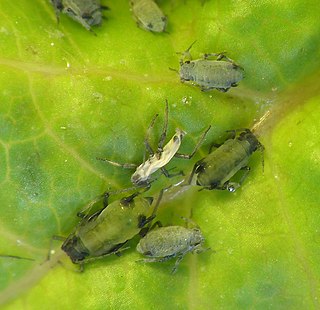Related Research Articles
This list contains species first discovered in Hong Kong, with the endemic species asterisked.
Asturodes is a genus of snout moths in the subfamily Spilomelinae of the family Crambidae. The genus is placed in the tribe Margaroniini.
Siamusotima is a genus of moths of the family Crambidae. The genus was erected by Maria Alma Solis et al. in 2005.
Aphomia fuscolimbellus is a species of snout moth in the genus Aphomia. It was described by Ragonot in 1887. It seems to be described from North America, but the origin of the species is unknown.

The genus Caliroa is a group of sawflies in the family Tenthredinidae. The larvae are slimy in appearance, and are sometimes referred to as "slugs", though they are not gastropods, but insects.
Neomusotima conspurcatalis is a moth in the family Crambidae. It was described by William Warren in 1896. It is found in India, Indonesia, East Timor and Australia.
Siamusotima aranea is a species of moth of the family Crambidae first described by Maria Alma Solis et al. in 2005.
Loxomorpha flavidissimalis is a moth in the family Crambidae. It was described by Augustus Radcliffe Grote in 1877. It is found in the United States, where it has been recorded from Texas, Florida, North Carolina and West Virginia. It is also found in Mexico and Puerto Rico. It has also been recorded from Australia.
Omiodes hallwachsae is a moth in the family Crambidae. It was described by Patricia Gentili-Poole and Maria Alma Solis in 1998. It is found in Costa Rica. It was named in honor of biologist Winifred Hallwachs.
Eugene Gordon Munroe was a Canadian entomologist who discovered numerous species of insects. He worked for the Insect Systematics and Biological Control Unit, Entomology Division in Ottawa, Ontario, Canada.
Ormocerus dirigoius is a species of stingless wasp. It is native to Maine, United States. It is likely a parasitoid of an oak gall wasp in the family Cynipidae. This species was found in bi-catch of samples collected for another research project.

Hyadaphis is a genus of aphids in the family Aphididae. There are about 19 described species in Hyadaphis.
Cerataphis is a genus of witch hazel and palm aphids in the family Aphididae. There are about 10 described species in Cerataphis.
Hayhurstia is a genus of aphids in the family Aphididae. There is one described species in Hayhurstia, H. atriplicis.
Sarucallis is a genus of aphids in the family Aphididae. There is one described species in Sarucallis, S. kahawaluokalani.
Neophyllaphis is a genus of aphids in the family Aphididae. There are about 18 described species in Neophyllaphis.

Hyperomyzus is a genus of aphids in the family Aphididae. There are more than 20 described species in Hyperomyzus.

Trichaeini is a tribe of the species-rich subfamily Spilomelinae in the pyraloid moth family Crambidae. The tribe was erected by Richard Mally, James E. Hayden, Christoph Neinhuis, Bjarte H. Jordal and Matthias Nuss in 2019.

Tamalia is a genus of aphids in the family Aphididae. There are about six described species in Tamalia.

Hormaphis is a genus of witch hazel and palm aphids in the family Aphididae. There are at least three described species in Hormaphis, found mainly in eastern North America.
References
- 1 2 Solis, M. Alma; Pratt, Paul; Makinson, Jeff; Zonneveld, Ryan; Lake, Ellen (July 2017). "Another New Lygodium-Boring Species of the Musotimine Genus Siamusotima (Lepidoptera: Crambidae) from China". Proceedings of the Entomological Society of Washington. 119 (3): 471–480. doi:10.4289/0013-8797.119.3.471. ISSN 0013-8797.